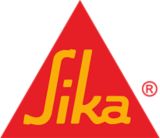
Sikaplan® SGK-18
Polymeric membrane for adhered roof waterproofing
Sikaplan® SGK-18 is a multi-layer, polyvinyl chloride, weldable, (PVC) roof waterproofing sheet membrane which is fully bonded using Sikal®
adhesive. It contains an inlay of glass non-woven and polyester fleece backing according to EN 13956.
- Resistant to permanent UV exposure
- High dimensional stability from glass fleece inlay
- Water vapour permeable
- Resistant to many common environmental
influences - Hot air weldable
- No open flame equipment required
- Hot air welding without use of open flames
